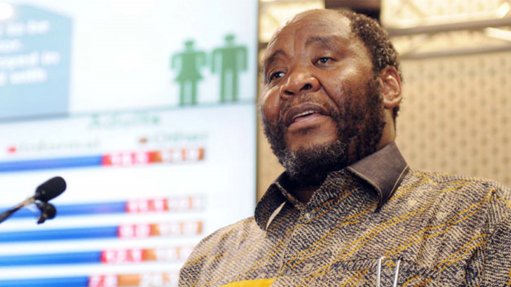
Statistician General Pali Lehohla
Photo by: GCIS
The black African population aged 25-64 years still lags behind on higher education attainment compared to other population groups, with close to 9% of black Africans having some post-secondary qualification.
This is according to the results of the Educational Enrolment and Achievement 2016 report, released by Statistics South Africa today. The report indicates that educational attainment was the highest among whites with 38,3% of this population group having post-secondary education.
Post-secondary attainment among black Africans and coloureds was below the national average with 9,1% and 8,1% respectively.
There are some indications that the throughput of black Africans and coloureds from Grade 12 to a post-secondary qualification is declining, rather than improving. Close to 15% of black Africans and 17% of coloureds dropped out of school with only some primary education. Overall, only 12% of South Africans aged 25-64 have some post-secondary qualification.
The greatest achievement is observed in upper secondary (Grades 10, 11 and 12) completion among individuals aged 20-24, with a 73,4% completion rate. Upper secondary completion rates by population aged 15 and above was the highest in Gauteng (59,9%) and among Indians (61,2%); and lowest in Northern Cape (47,6%) and among coloureds (52,7%).
Gross enrolment rates (GER) describe the enrolment rate for the different educational phases or grades as compared to the eligible population. In 2016, the overall gross enrollment rate at primary school level was 123%, secondary 108% and post-secondary 3,6%. The GER’s for primary and secondary school indicate that the number of children attending a particular stream exceed the expected number based on age.
This is particularly true for Eastern Cape and Limpopo. Furthermore, the GER in early childhood development facilities for children aged 3-4 was only 39%, showing that most children in this age group were not accessing early learning programs.
The report also shows that youth aged 20-34 realised higher educational attainment than their parents. It was found that close to 70% of those who had completed secondary schooling were first-generation high-school graduates.
Similarly, just over 70% of those who completed post-secondary education were first-generation post-secondary qualification holders. The report found that the higher the parent’s education level, the more likely the children are to achieve upward educational mobility.
While most white children with post-secondary qualifications also had parents with similar qualifications (56%), intergenerational transmission of similar qualifications was achieved by 28% coloureds, 27% Indians and 24% black Africans.
Issued by Statistics South Africa